#environmental education
Text
youtube
Watch the 2024 American Climate Leadership Awards for High School Students now: https://youtu.be/5C-bb9PoRLc
The recording is now available on ecoAmerica's YouTube channel for viewers to be inspired by student climate leaders! Join Aishah-Nyeta Brown & Jerome Foster II and be inspired by student climate leaders as we recognize the High School Student finalists. Watch now to find out which student received the $25,000 grand prize and top recognition!
#ACLA24#ACLA24HighSchoolStudents#youtube#youtube video#climate leaders#climate solutions#climate action#climate and environment#climate#climate change#climate and health#climate blog#climate justice#climate news#weather and climate#environmental news#environment#environmental awareness#environment and health#environmental#environmental issues#environmental education#environmental justice#environmental protection#environmental health#high school students#high school#youth#youth of america#school
24K notes
·
View notes
Text

Left to right: polar bear, grizzly bear, black bear
#polar bear#polar bears#bears#mammals#wildlife#skulls#animal skulls#animal bones#vulture culture#wildlife biology#anatomy#animal anatomy#nature#naturalist#zoo animals#zoo education#environmental education#north american wildlife#north america#bear#black bears#black bear#grizzly bear#grizzlies#grizzly bears#nature photography#photography#mine#ecology#wildlife biologist
236 notes
·
View notes
Text
Decolonize Research through Critical Ecology
How do we ask better questions about what it means to be a researcher? My work with Critical Ecology Lab, featuring Dr. Suzanne Pierre, allowed me to understand more of how research must also extend itself to liberation rather than extraction for science.
----------------------------------------------------
youtube
If you want to learn more about her work, I highly recommend watching the episode- love you all!
#science#ecology#political science#research#grad student#uc berkeley#researchers#berkeley#social justice#environmental justice#environmental education#sustainability#Youtube
25 notes
·
View notes
Text
World Wilderness Congress Focuses on Indigenous Knowledge

"Humanity stands at a crossroads and must come together to realize dramatically different and supportive relationships with one another, the Earth, and all life on the planet, if we are to surmount cascading ecological and social crises now underway."
That was the message of Chief Arvol Looking Horse, the spiritual leader of the Lakota, Dakota, and Nakota peoples, who on Sunday welcomed hundreds of attendees to the 12th World Wilderness Congress convening this week in the Black Hills, or He Sapa in the Lakota language. Though these gatherings, dedicated to assessing and often resetting global conservation work, date back to the 1970s, this is the first such congress being convened by a tribal authority. The agenda is dedicated heavily to centering Indigenous perspectives in the global struggle to protect wild lands and waters.
Indigenous peoples articulate alternative environmental perspectives and relationships to the natural world. Indigenous mythologies and oral traditions express a non-anthropocentric environmental ethic. Indigenous groups offer ancient tried-and-tested knowledge and wisdom based on their own locally developed practices of resource use. And, as Native peoples themselves have insisted for centuries, they often understand and exhibit a holistic, interconnected and interdependent relationship to particular landscapes and all of the life forms found there. Despite making up a tiny fraction of the world's population, Indigenous peoples hold ancestral rights to some 65 percent of the planet. This poignant fact conveys the enormous role that Native peoples play not only as environmental stewards, but as political actors on the global stage.
All over the world, Native peoples are engaged in battles with hostile corporations and governments that claim the right to set aside small reserves for Native people, and then to seize the rest of their traditional territory. They are confronting the destructive practices of industry and leading the charge against climate change while defending the rivers, forests and food systems that we all depend on. At the same time, they are blocking governments from eroding basic rights and freedoms and turning to the courts of the world to remedy 500 years of historical wrongs. Native peoples are putting their lives on the line and fighting back for political autonomy and land rights. And all the while, they are breathing new life into the biocultural heritage that has the potential to sustain the entire human race.
Looking Horse, the 19th Keeper of the Sacred White Buffalo Calf Pipe and Bundle, is as revered among the original people of this land as the Dalai Lama is by the people of Tibet or the Pope for Catholics around the world.
"We warned that some day you would not be able to control what you had created. And that day is here. Mother Earth is sick and has a fever," Looking Horse told the group assembled from nations, tribes, and communities across the world.
The chills of that "fever"--the accelerating shocks of climate destabilization caused by centuries of colonial extraction, fossil fuel combustion, and ecological destruction--rocked communities around the world in 2023, with 2024 continuing to break heat records. A "State of the Climate" report that drew on the work of nearly 600 scientists pointed to unprecedented levels of greenhouse gasses in the atmosphere as the cause of Earth's overheating. Records were similarly broken for ocean heat, sea-ice loss, and sea-level rise. In all, industrially-driven global warming exposed nearly 80 percent of the people on the planet to at least 31 days of extreme heat, another study found. This level of heat was virtually impossible if not for the burning of fossil fuels and development-driven deforestation, Climate Central researchers have reminded us.
But organizers and attendees at WILD12 aren't there to haggle over carbon credits or debate the benefits and risks of carbon capture technologies and blue hydrogen, the substance of so many climate gatherings and debates. Instead, The WILD Foundation, through decades of international gatherings, aims to interrupt one driver of climate crisis that gets far less air time than carbon emissions: the global loss of the planet's wild spaces, which for millions of years have served as the planet's lungs and carbon sinks.
Yet even conservation spaces and agendas have offered a shallow understanding of problems and solutions, overlooking the deeper cultural--and thus colonial--roots of ecological collapse. What makes this year's congress so significant is its aim to reformulate the global conservation agenda not only by placing Indigenous leadership at the forefront of conservation action, but more foundationally, by centering Indigenous knowledge and worldviews in understandings of what Western cultures call wilderness.
In other words, the cultural roots of the collapse of our shared biosphere lies not in the make, model, or brand of the tools we use to clearcut forests or fuel plastics production. Rather, it lies in a fundamental misunderstanding that goes all the way to the bottom of Western thought: the hierarchical dualism that imagines the "human" as both separate from and superior to "nature".
Perhaps the most important aspect of Indigenous cosmology is the conception of creation as a living process resulting in a living universe in which a kinship exists between all things. Thus the Mother Earth is a living being, as are the Sun, Stars and the Moon. Hence the Creators are our family, our Grandparents or Parents, and all of their creations are children who are also our relations.
What needs to be understood and challenged, then, is the very basic conceptual groundings of Western culture itself, which gave birth to capitalism as a global economic system for extracting profit both from the bodies of people racialized and gendered as "others" and from land, treated as a dead thing or "resource" to extract from. For it is these philosophical and economic assumptions that--especially from an Indigenous perspective--facilitated colonization and enabled the genocides, slavery, and racial capitalism that followed.
The industrialized West is largely unaware of how Indigenous societies have functioned and the strengths they possess that industrial cultures have lacked. Our notions of progress are based on the idea that high tech means better, and that industrial cultures are somehow more advanced socially. The current state of our threatened environment demands that communication channels be opened for dialogue and engagement with Native environmental ethics. Native people are not only trying to protect water sources, clean up uranium tailings and mount opposition to fossil fuel extraction, they are also continuing their spiritual ways of seeking to celebrate and support all life by means of ceremonies and prayers.
#Chief Arvol Looking Horse#climate summit#indigenous knowledge#indigenous cultures#environmentalism#environmental education#lakota people#native americans
4 notes
·
View notes
Text
I genuinely get a little upset when people talking about saving the bees. Not because I think the bees aren’t worth saving, but because people are only performative and don’t actually know anything.
When most people say “save the bees” they mean honey bees, and this is quite apparent since many of the reasons they say this is because “we’ll lose honey” if we don’t. But they don’t even know that the honeybees aren’t native to the US (they were brought over with our colonizers. Funny, even their bugs were colonizers) and are in fact competitors to native wildlife. We don’t have to worry about saving honey bees because corporations already want to do that. Honeybees are essential to pollinating plants for large scale fruit and vegetable growth for supermarkets, so the corporations who sell these crops won’t let them die out. What we need to worry about is the native species which are dying, some of which due to the introduction of honeybees to our continent. Honeybees don’t even do most of the pollinating outside of corporations, especially with native plants which we need to conserve.
Did you know that fireflies are going extinct? A lot of different actually native bees are too, and a bunch of other insects that help to pollinate. Birds and small mammals are a big part of pollination, and we’re losing a lot of those too.
But again, people just want to wear a shirt that says “save the bees” and buy honey infused soap or whatever, because it’s a trend, not because they’re actually wanting to help save our environment.
#honey bees#save the bees#save the bats#save the butterflies#save the world#save the earth#save the environment#pollinators#firefly#fireflies#lightning bug#environmental education
66 notes
·
View notes
Text
The Urgency of National Wildlife Week: A Call to Action for Biodiversity Preservation
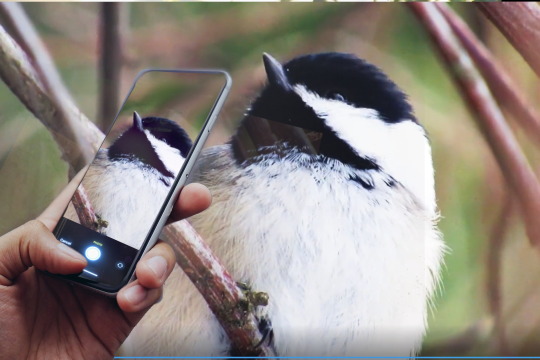
View On WordPress
#advocacy#afforestation#afforestation areas#biodiversity#Buddy System#Citizen Science#citizen scientists#City Nature Challenge Events#Climate Action#climate change#Community Empowerment#Community Engagement#conservation#conservation awareness#Conservation Efforts#conservation initiatives#Eco-Quest Projects#ecological balance#Ecological preservation#Ecological Restoration#ecosystem health#Ecosystem Restoration#endangered species#Energy Use#environmental awareness#environmental challenges#environmental conservation#Environmental Education#environmental impact#Environmental Management
4 notes
·
View notes
Text
Role of Nature Interpretation in Environmental Stewardship
Before starting this course and my placement as an Outdoor Education Intern, I put greater emphasis on scientific evidence as one of the most important ways to get people to care about environmental issues. I thought that if everyone knew the alarming facts of climate change or the rapid decline of wildlife, people would strive to make the drastic changes needed to address these issues. However, by focusing on only the science many people become disinterested or so overwhelmed that they feel powerless. Whether at a National Park, school or online forums, nature interpretation programs allow people to build emotional connections to nature while learning about the natural world and the importance of sustaining the earth's resources.
While working as an Outdoor Education Intern at the Etobicoke Outdoor Education Centre (EOEC) for my first 4-month co-op placement, I got to work with Toronto District School Board kids from grades 4-8. School groups would visit EOEC for three days where they got to take place in curriculum-based outdoor programs. Additionally, during the school trips students participated in an ecological footprint challenge that focused on reducing food waste and water and energy conservation.
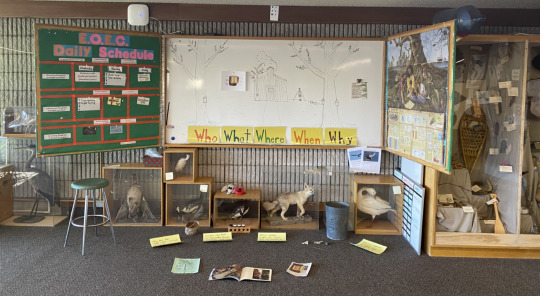
A picture I took of the main classroom at the Etobicoke Outdoor Education Centre.
At the start of my placement, I remember feeling disheartened by the number of kids who showed little interest and even apathy for being outdoors. I would wonder how these kids could not love being surrounded by the beautiful natural world. I quickly realized that many of these kids had never spent extended periods outdoors. This was due to limited access to the outdoors because of location, financial reasons and other limitations. These kids had little opportunity to gain a connection to nature, so it only made sense that few of the students had positive feelings toward natural environments. However, every week during this co-op placement, I got to help students with varying levels of outdoor experience explore new activities and gain a greater appreciation for nature, which was truly fulfilling.
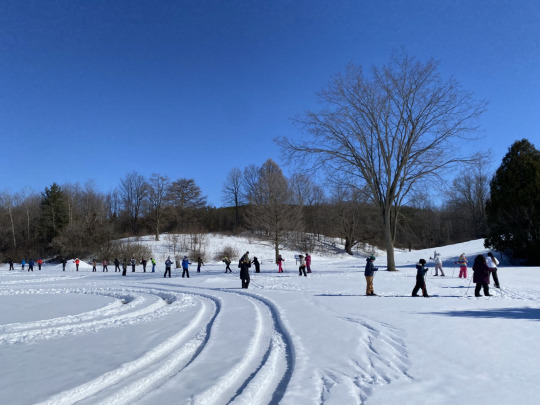
A picture of a school group cross-country skiing at EOEC. This was many of the student's first-time cross-country skiing.
This course has allowed me to reflect on my time as an outdoor education intern and better understand the significance of nature interpretation in Environmental Education. As emphasized by Beck et al. (2019), interpreters work to communicate to people the importance of resources in a way that forges emotional and intellectual connections. Environmental education should provide emotional context that allows people to think ethically, creatively, and critically about environmental issues, solutions, and personal environmental stewardship (Wals et al., 2014). Environmental education is a form of nature interpretation that connects people emotionally with nature while providing them with tools to better understand environmental problems and solutions.
Connecting scientific knowledge with place-based and indigenous knowledge is essential for getting people to actively engage in sustainability (Wals et al., 2014). Nature interpretation programs such as those at outdoor education centres and National Parks create positive emotions toward nature and provide people with a sense of place (Beck et al., 2019). Nature interpretation provides individuals with the emotional connections and curiosity that allow people to appreciate the environment. Through interpretation, people may be inspired to learn more about nature and find ways to participate in environmental stewardship daily.

This is a board students used to track their class's eco-footprint challenge results while at EOEC. Students tracked the amount of food waste produced at the end of each meal, how many lights were left on before each program and water usage.
Additionally, nature interpretation programs that supply individuals with chances to engage in stewardship efforts on their own help people continue to build strong relationships with the environment. For example, in Washington Wachira’s Ted Talk, For the Love of Birds, he conveys to the audience the beauty and significance of birds by touching on the formative experiences that led him to his passion for birds (2017). Near the end of the TED Talk, Wachira tells the audience about citizen science programs around the world that people can take part in to help bird conservation efforts. This is an excellent way to show people that they too, have the power to help protect wildlife.
Citizen science enables people to participate in environmental stewardship by assisting with scientific research within their communities (Merenlender et al., 2016). Citizen science is a part of environmental education that further develops a person's scientific knowledge and sense of place in a fulfilling way (Merenlender et al., 2016). Like the eco-footprint challenge students participate in at EOEC, citizen science allows people to feel like they can take part in meaningful environmental stewardship efforts that make a difference.

Providing people with profound experiences outdoors through nature interpretation, environmental education, and citizen science is vital to environmental preservation. Nature interpretation provides the spark of inspiration needed to see the beauty in nature and the desire to preserve the environment that science alone cannot provide.
References
Beck, L., Cable, T. T., & Knudson, D. M. (2019). Interpreting cultural and natural heritage: For A Better World. Sagamore Publishing.
Merenlender, A. M., Crall, A. W., Drill, S., Prysby, M., & Ballard, H. (2016). Evaluating Environmental Education, citizen science, and stewardship through naturalist programs. Conservation Biology, 30(6), 1255–1265. https://doi.org/10.1111/cobi.12737
Wachira, W. (2017, August). For the love of birds. Washington Wachira: For the love of birds | TED Talk. https://www.ted.com/talks/washington_wachira_for_the_love_of_birds
Wals, A. E., Brody, M., Dillon, J., & Stevenson, R. B. (2014). Convergence between science and environmental education. Science, 344(6184), 583–584. https://doi.org/10.1126/science.1250515
4 notes
·
View notes
Text
Below is a picture showing starved children of somalia and food waste generated in Africa
The world's most influential environmental firm, The UNEP is running a launch
Of the 2024 Global Report on Food Crises#GRFC24 to hear from experts on food security.
This following a statement by UNEP reporting; Global hunger is increasing. Yet, 1.05 billion tonnes of food is wasted per year, while the climate crisis increasingly threatens food security in many parts of the world.
Environmental issues like this are still in addressed due to unawareness of the issues and/ or ways to tackle them.
One of the most vital and effective ways tackle environmental issues that involve waste production is RECYCLING.
Here are 4 ways to reduce food waste individually/ domestically
Recycling food by planting the parts that re-grow. These parts include seeds, skin the core and others. Planting of these parts will not only re-produce food but reduce market consumption and the plants performs as carbon sinks thereby reducing carbon and other pollutants in the atmosphere that cause climate change.
Unlike tossing food and contributing to the tonnes of food waste while others linger in hunger crisis, There are many delicious food dishes that can be created with left over food. Leftover food can be put to good use with minimal Internet research.
Food waste can be recycled into compost. The food waste produced by domestic homes can be Millions of tones of food waste that can be used as compost that can be used in gardens to for a good produce of a lot of healthy organic food.
A lot of people around the globe depend on pastoral and poultry produced food. These have been affected by climate change having contributed to the hunger crisis the globe is facing. Food waste produced domestically can be recycled to ideally organic animal feed or at least donated to animal feed producing firms. This can help increase food production, that is healthier as well as reduce food waste.


#somalia#somaliland#food crimes#food crisis#environmental justice#unep#united nations#magazine#africa#panafrican#my writing#afrofuturism#african politics#artists on tumblr#african writers#fashion#writers#environmental education#climate anxiety#recycling#upcycle#waste
2 notes
·
View notes
Text

Yesterday I got to take fifty 11 and 12 year olds to learn about this stream. And yes field trips are such a pain to plan and carry out but sometimes you have a moment when a kid says "This was the best trip ever" as they talk about the creatures they found in the creek.
4 notes
·
View notes
Text
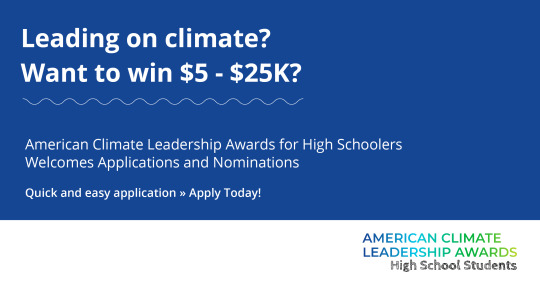
Last call: It's the final week to apply for the American Climate Leadership Awards for High School Students! Apply by Friday, December 15, at midnight PT!
ANNOUNCING: American Climate Leadership Awards has a new category for high school students working towards local climate solutions! @ecoamerica is awarding $125K in cash prizes to student climate leaders. Apply by 12/15: https://ecoamerica.org/american-climate-leadership-awards-high-school-2024/
#ACLA24HighSchoolStudents#ACLA24#high school#high school students#school#education#climate education#environmental education#climate and education#environment and education#climate action#climate and environment#climate#climate and health#climate blog#climate change#climate justice#climate news#weather and climate#environmental news#environment#environmental awareness#environmental activism#environmental justice#environmental#environment protection#environment and health#environmental health
8K notes
·
View notes
Text

Lots of fresh beaver chews by the river today! 4/24/24
#beavers#animal tracking#nature#wildlife#beaver#mammals#mine#naturalist#nature photography#photography#ecology#north america#animals#original photography#original photographers#landscape photography#landscape#native land#river#rivers#ecologist#biologist#natural history#environmental education#forest#trees
20 notes
·
View notes
Text
Lake Erie phosphorus reduction
Protecting and preserving the state’s water quality continues to be a top priority for both the Michigan Department of Agriculture and Rural Development (MDARD) and the administration of Gov. Gretchen Whitmer and Lt. Gov. Garlin Gilchrist.One focal point of this mission is the Western Lake Erie Basin (WLEB), where sometimes-harmful algal blooms have affected aquatic life and drinking water in recent years. Factors contributing to algal blooms include nutrient-rich water from wastewater treatment plants and farm fields.While reductions of phosphorus at four of the key wastewater facilities in Michigan’s portion of the WLEB helped Michigan hit its 20% phosphorus loading reduction goal by 2020, they won’t be sufficient to achieve the 40% reduction target Michigan, Ohio, and Ontario agreed to reach by 2025 under the 2015 Western Basin of Lake Erie Collaborative Agreement.Moving forward, it will require new approaches to realize progress from agricultural contributions. MDARD is laser-focused on accelerating conservation in the right places across the WLEB watershed with programs and projects defining success through realistic and achievable water quality outcomes to restore the health of the Lake Erie ecosystem.While significant progress has been made with point sources (pollution from a single identifiable source or area), it’s time to put our foot on the gas pedal with agricultural nonpoint sources (pollution from many sources at once).In support of the governor’s MI Healthy Climate Plan, the Fiscal Year 2024 budget includes a total $15 million investment to support soil health, climatesmart agriculture practices, and regenerative agriculture. These priority areas aren’t solely about building stronger agricultural systems and resilient rural economies; they also place a specific focus on improved environmental outcomes.These investments in soil health to improve water quality are a notable shift in MDARD’s efforts to tackle nutrient losses. Managing agricultural systems to improve waterholding capacity and rainfall infiltration, while enhancing biological cycling to reduce the need for fertilizer inputs, is a paradigm shift in nutrient management for MDARD. Regenerative agriculture principles have been shown to not only reduce nutrient losses but mitigate the impacts of extreme weather – all while prioritizing the agricultural diversity that powers our rural communities.To better prioritize conservation practice implementation and quantify results, the Domestic Action Plan (DAP) Team, composed of staff from MDARD and the Michigan DNR and EGLE, is working with MSU to enhance the Great Lakes Watershed Management System to annually quantify phosphorus load reductions from conservation practice implementation relative to the 40% reduction goal. This public-facing online platform will include a dashboard that tracks water quality outcomes associated with social and ecological metrics, providing greater accountability for program implementation in Michigan’s portion of the WLEB.MDARD is dedicated to achieving demonstrable water quality improvements in Lake Erie. The state’s investments in soil health and regenerative agriculture principles hold the promise to not only improve water quality but enhance the climate resiliency of our agriculture systems, while placing value on how and where our food is grown.These new budget investments by Gov. Whitmer position Michigan to achieve long-term, tangible outcomes that take us beyond water quality.Take a deeper diveLearn more about phosphorus reduction efforts in Michigan’s portion of the Lake Erie watershed at Michigan.gov/LakeErieDAP.

#cleanwater#pollution prevention#protectourwaterways#environmentaleducation#protectourplanet#environmental education#michigan#egle#great lakes#greatlakes
2 notes
·
View notes
Text
Amazon job Work from Home Part Time & Full Time Jobs
Attention makeup mavens! 💄✨ Looking for a gig you'll love? We're hiring staff to package makeup items for Amazon. Earn a competitive salary while indulging in your passion. DM for details! This is job only for USA. ✅Here are all details
#ACLA24#ACLA24HighSchoolStudents#youtube#youtube video#climate leaders#climate solutions#climate action#climate and environment#climate#climate change#climate and health#climate blog#climate justice#climate news#weather and climate#environmental news#environment#environmental awareness#environment and health#environmental#environmental issues#environmental education#environmental justice#environmental protection#environmental health#high school students#high school#youth#youth of america#school
2 notes
·
View notes
Text
So over spring break I went to the Pennsylvania Association of Environmental Educators Conference, which was up in the Poconos this year, and oh boy it was amazing!!!
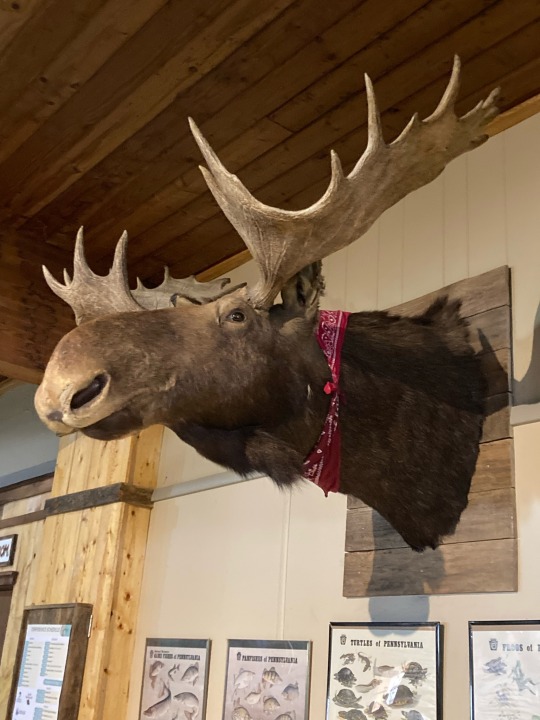
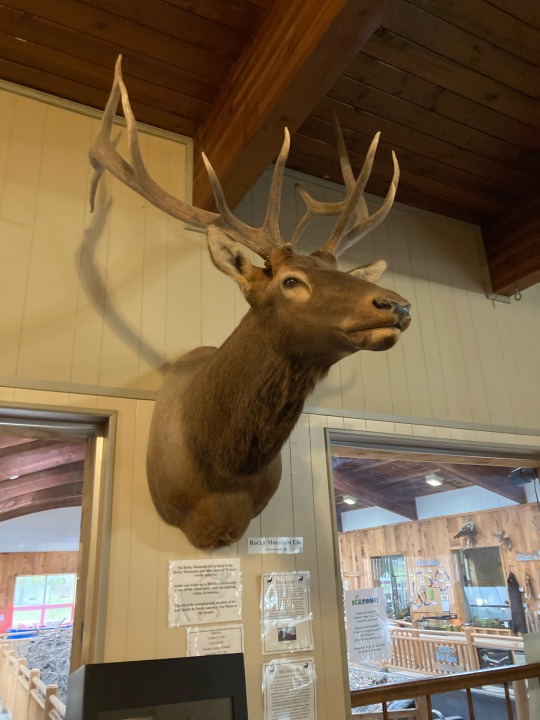
I had so much fun at the conference and am so grateful for my job and my university for providing me with the opportunity to go to this great event! Even though I don’t want to go into the Environmental Education field professionally, I still want to incorporate it in my teaching methods once I become a full time teacher, and this conference had lots of amazing seminars that had a lot of interesting topics that were still incredibly useful to me as an Early Childhood Education major.

There were also just a bunch of cool things that I got to do and see during this trip! Like seeing all the taxidermy animals at the nature center (I always forge how big elk are till I’m standing underneath a disembodied head of one of them).
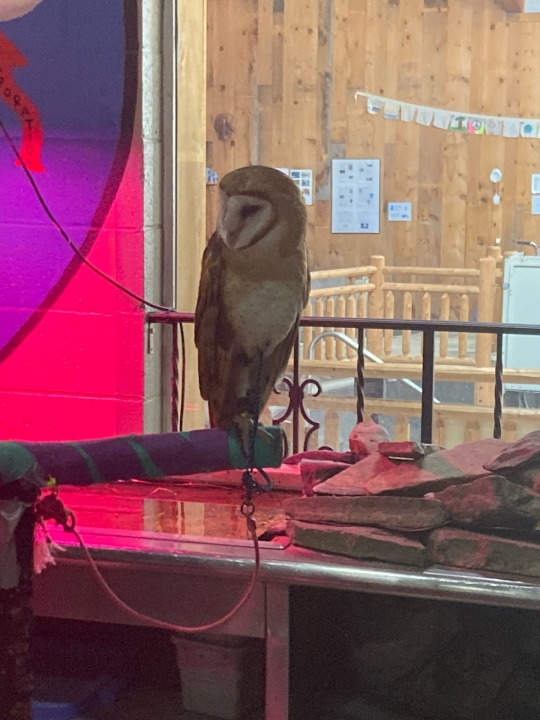
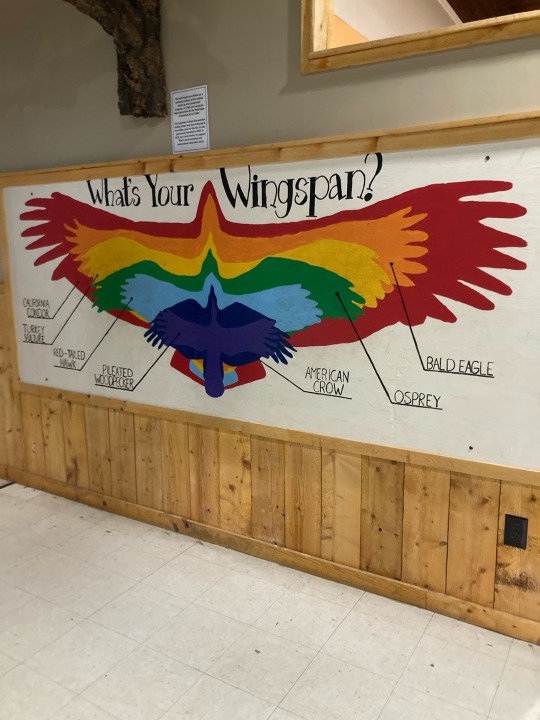
I also saw this cool Barn Owl named Soaren who was with this animal rescue organization that had a booth at the event, though he wasn’t a rescue and was a captive bred animal ambassador. There were also a pair of Southern Flying Squirrels and a Milksnake but I didn’t get any good pics of them. They didn’t have names either since they’re gonna be released once it warms up.
On the first day we also went on a night hike and saw this amazing beaver swimming in the pond next to the center! It was a magical experience seeing beavers in the wild for the first time and I’ll definitely never forget it!!! 🦫
2 notes
·
View notes
Text
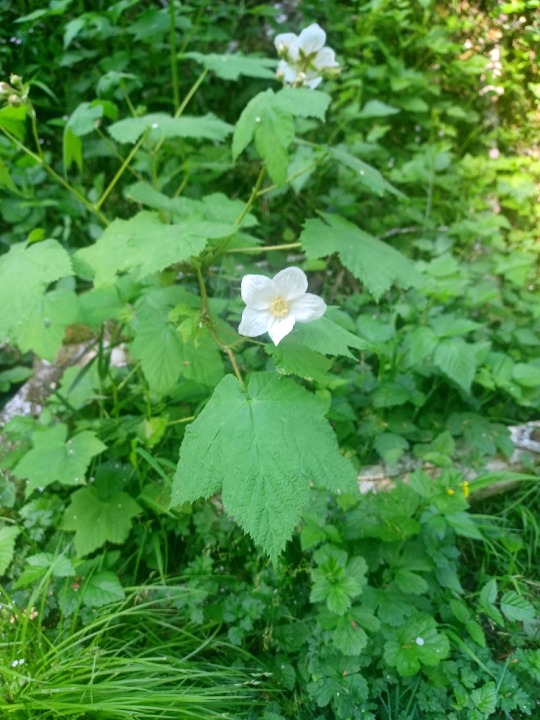
Hey, if you're in the Columbia-Pacific region of Oregon/Washington, the Friends of Willapa NWR Environmental Education program needs you! Our fourth grade EE students are getting ready for their big field trip to the Refuge near Long Beach, WA at the end of the month (May 30-June 1).
We could use a few more folks to help these kids learn more about the natural history of the Refuge. They've already spent time in class exploring how light, air, water, and soil affect what living beings are found in each habitat, and this is their chance to put that into practice. You don't need to be a scientist or a teacher, just someone with a love of nature who's willing to review the materials they've been using and help them engage their curiosity. We have a training scheduled for May 25, but I'm also doing other trainings for folks who can't make that date.
You'll lead a small group (fewer than 10) students along with a teacher and a parent chaperone around the Tarlatt/South Bay Unit of the Refuge. The students arrive at 9, and need to be back on the bus around 1, but not before they've been able to check out a few stations set up by Refuge staff. You can volunteer for one, two, or all three days, with a different group of students each day.
If you're interested in volunteering, drop me a line here or email Hope Presley at hope_presley(at)fws(dot)gov
#Willapa National Wildlife Refuge#wildlife refuge#environmental education#Long Beach Peninsula#Washington State#ecology#nature#wildlife#volunteering
15 notes
·
View notes
Text
Learning, growing, and sharing the passion🐛🦋(U10)
Reflecting on my journey of developing my personal stance as a nature interpreter, I realize my ethos is deeply rooted in storytelling. While I would absolutely consider myself smart and capable of any challenge thrown my way, I wouldn't claim to be the one to ask for a perfectly articulated summary of a concept, or a history (or stats oh gosh...)) But! I am your girl if you want to talk about animals or nature with the same excitement and perception shifts you had as a kid; when learning about something like dinosaurs or other planets for the very first time and feeling like your mind was blown, or maybe even that the person was just making stuff up because of how wild it seemed.
At it’s core, my passion sings when having the chance to discuss niche topics with open-minds that delve into things like evolution, coming from the perspective that there are so many mysteries out there that could be unraveled if you only cared to look.
Just this week, some of these topics for me and some peers have included trying to understand bird tetrachromacy (how and why they can see in UV), mammals returning to the water like whales and dolphins, or how?? Literally how??? lemurs got to Madagascar.
To me, it's not just about sharing information, but having fun in the process and getting to share what you learn about the animals and their exploits in ways that would rival the wildest fantasy stories.
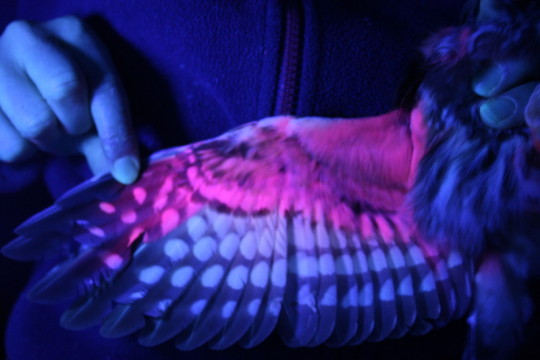
[Saw-whet owl wing under UV💡 ]

[OG whale💪🏻 ]
I've been playfully dubbed the "zookeeper of knowledge" by a friend in this context, after spending far too many hours working on a project because we kept getting side-tracked and discussing things not necessarily needed, but so incredibly interesting. (And it’s probably a title I'd gladly claim if it weren't so corny to be honest.) Regardless, it summarizes my commitment to becoming a curator of the captivating craziness that the animal kingdom has to offer. With a bias but passionate zoological perspective, I strive to share my spark of curiosity. ✨
Beyond my zoology lens, I strive for a focus on eco-consciousness in the work that I do, hoping to bridge the gap between science and the public and to foster stronger connection with Mother Nature.
As for translating these passions to children, I’m a firm believer in both transparency and honesty. While it’s almost guaranteed they won’t enjoy their first climate change lesson, I think forming traits of environmental stewardship and the understanding that actions have environmental consequences in children is critical if we want our passion for nature to be held by future generations. I remember my first lonely polar bear on a drifting ice berg video, and yes I was sad….but it left a vivid mark on my consciousness, shaping my understanding of the environmental challenges we face and it very likely brought me to where I am today.
Speaking of inspiring children, I cannot hold myself back as I have to show you guys what I found last week!

[Zoologist Barbie!!!!!!!!💗💗💗💗💗💗💗💗💗💗💗💗💗💗💗]
I'm not even that much of a Barbie fan but I think now I have to be! I would have exploded with joy if I had this as I kid! I mean, if Barbie is doing it, I can't even imagine how many little girls will now be exposed to the possibility of studying zoology or similar topics and I won't lie...I could cry 🥹 (not to mention how close the koala is to a lemur and my personal goals regarding that....interesting......verrry interesting 🔮)
Though I still think going outside with curiosity in mind is the number one way to develop a relationship with nature, I’d consider things and representations like this even more important in places like cities, where natural spaces are becoming less and less accessible due to never-ending infrastructure and the digital domination of screens and virtual experiences.
The allure of video games and online platforms often out-win outdoor activities at least in my own anecdotal experience, raising concerns about the disconnect between the younger generation and the natural world. I think environmental educators are becoming more and more important in schools, and I believe they play a pivotal role in counteracting this trend, as they offer opportunities for a child to focus on wonders within the natural world. I had a hard time myself trying to sound reasonable to many of my friends and family as a kid when saying I wanted to study animals and nature since technology was progressing so quickly and I was viewed as looking backwards.
and so I think this doll (or things similar) can reinspire or hold that flame when kids aren't yet to sure if they'll find a nice outdoor spot to explore, an educator excited to answer questions, or a community like Guelph that embraces natural sciences so much.
In my opinion, harsh climate crisis truths can surely be sugar-coated for young minds to an extent, but to completely wait until their old enough to ‘actually understand’ is just providing the perfect opportunity for a child to become a distracted or oblivious teenager or adult. Again, this is my opinion but at this point in time, in a current climate crisis with almost no signs of slowing down, being an adult in a country like Canada and purposely ignoring it is NOT cool!!
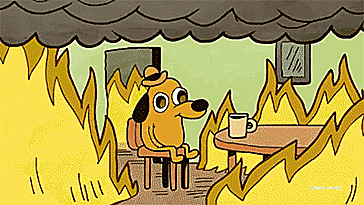
Now, we don’t have to live every moment with the weight of the world on our shoulders, and I don’t wish that on anyone! But I believe the absolute bare minimum is to consider our actions in relation to nature and provide the next generation the building blocks and exposure they'll need to make environmentally conscious choices. Concepts like reusable water bottles over disposable plastic ones, not littering, and realizing our planet belongs to others too aren’t scary things and if anything, promote cultures of care and community. These seemingly simple ideas start to lay the foundation for responsible and conscious individuals to gladly carry the torch of environmental awareness into the future!
Anyways, that's what's up with me, and so I hope you've found at least one thing on my blog that made you think about, reconsider, or learn something, and maybe even want to go hug a tree 💝🐛
Works cited
Johnson, N. A., Lahti, D. C., & Blumstein, D. T. (2012). Combating the Assumption of Evolutionary Progress: Lessons from the Decay and Loss of Traits. Evolution Education & Outreach, 5(1), 128–138. https://doi.org/10.1007/s12052-011-0381-y
Northern saw-whet owl outstretched wing under blacklight, by Seabrook Leckie, Attribution-NonCommercal-NoDerivs 2.0 Generic license, https://www.flickr.com/photos/rustyblackbird/
#nature interpretation#envs 3000#nature#zoology#zoologist barbie#climate change#environmental outreach#environmental education#barbie
3 notes
·
View notes